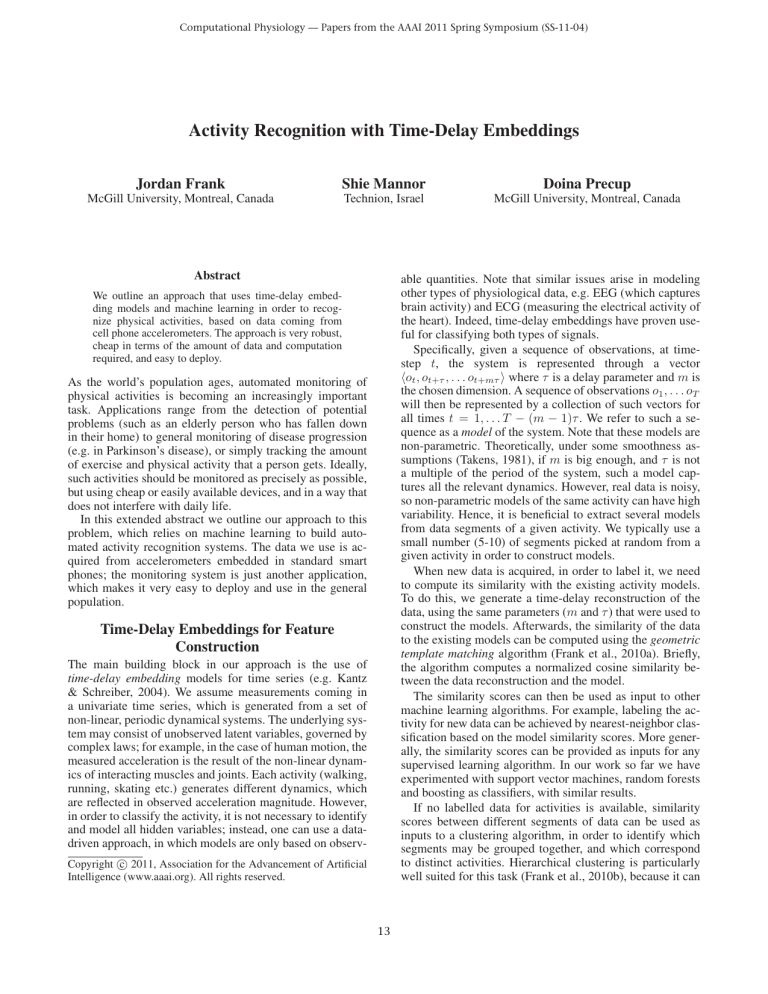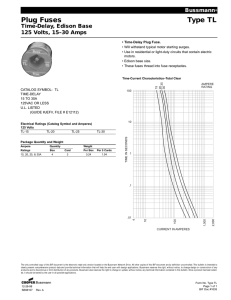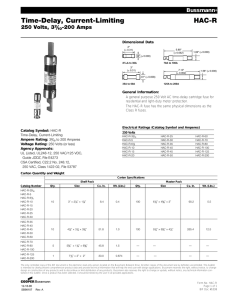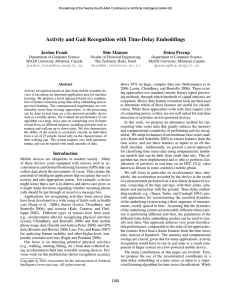
Computational Physiology — Papers from the AAAI 2011 Spring Symposium (SS-11-04)
Activity Recognition with Time-Delay Embeddings
Jordan Frank
Shie Mannor
Doina Precup
McGill University, Montreal, Canada
Technion, Israel
McGill University, Montreal, Canada
Abstract
able quantities. Note that similar issues arise in modeling
other types of physiological data, e.g. EEG (which captures
brain activity) and ECG (measuring the electrical activity of
the heart). Indeed, time-delay embeddings have proven useful for classifying both types of signals.
Specifically, given a sequence of observations, at timestep t, the system is represented through a vector
ot , ot+τ , . . . ot+mτ where τ is a delay parameter and m is
the chosen dimension. A sequence of observations o1 , . . . oT
will then be represented by a collection of such vectors for
all times t = 1, . . . T − (m − 1)τ . We refer to such a sequence as a model of the system. Note that these models are
non-parametric. Theoretically, under some smoothness assumptions (Takens, 1981), if m is big enough, and τ is not
a multiple of the period of the system, such a model captures all the relevant dynamics. However, real data is noisy,
so non-parametric models of the same activity can have high
variability. Hence, it is beneficial to extract several models
from data segments of a given activity. We typically use a
small number (5-10) of segments picked at random from a
given activity in order to construct models.
When new data is acquired, in order to label it, we need
to compute its similarity with the existing activity models.
To do this, we generate a time-delay reconstruction of the
data, using the same parameters (m and τ ) that were used to
construct the models. Afterwards, the similarity of the data
to the existing models can be computed using the geometric
template matching algorithm (Frank et al., 2010a). Briefly,
the algorithm computes a normalized cosine similarity between the data reconstruction and the model.
The similarity scores can then be used as input to other
machine learning algorithms. For example, labeling the activity for new data can be achieved by nearest-neighbor classification based on the model similarity scores. More generally, the similarity scores can be provided as inputs for any
supervised learning algorithm. In our work so far we have
experimented with support vector machines, random forests
and boosting as classifiers, with similar results.
If no labelled data for activities is available, similarity
scores between different segments of data can be used as
inputs to a clustering algorithm, in order to identify which
segments may be grouped together, and which correspond
to distinct activities. Hierarchical clustering is particularly
well suited for this task (Frank et al., 2010b), because it can
We outline an approach that uses time-delay embedding models and machine learning in order to recognize physical activities, based on data coming from
cell phone accelerometers. The approach is very robust,
cheap in terms of the amount of data and computation
required, and easy to deploy.
As the world’s population ages, automated monitoring of
physical activities is becoming an increasingly important
task. Applications range from the detection of potential
problems (such as an elderly person who has fallen down
in their home) to general monitoring of disease progression
(e.g. in Parkinson’s disease), or simply tracking the amount
of exercise and physical activity that a person gets. Ideally,
such activities should be monitored as precisely as possible,
but using cheap or easily available devices, and in a way that
does not interfere with daily life.
In this extended abstract we outline our approach to this
problem, which relies on machine learning to build automated activity recognition systems. The data we use is acquired from accelerometers embedded in standard smart
phones; the monitoring system is just another application,
which makes it very easy to deploy and use in the general
population.
Time-Delay Embeddings for Feature
Construction
The main building block in our approach is the use of
time-delay embedding models for time series (e.g. Kantz
& Schreiber, 2004). We assume measurements coming in
a univariate time series, which is generated from a set of
non-linear, periodic dynamical systems. The underlying system may consist of unobserved latent variables, governed by
complex laws; for example, in the case of human motion, the
measured acceleration is the result of the non-linear dynamics of interacting muscles and joints. Each activity (walking,
running, skating etc.) generates different dynamics, which
are reflected in observed acceleration magnitude. However,
in order to classify the activity, it is not necessary to identify
and model all hidden variables; instead, one can use a datadriven approach, in which models are only based on observc 2011, Association for the Advancement of Artificial
Copyright Intelligence (www.aaai.org). All rights reserved.
13
determine both the number of clusters, and the partitioning
of the data segments into clusters.
et al. (2006), which computes 650 features of the time series, composed of cepstral coefficients, FFT frequency coefficients, spectral entropy, band-pass filter coefficients, correlations, and a number of other features that require a nontrivial amount of computation. In their work, a modified version
of AdaBoost is used to select the top 50 features for classification, but other classifiers could be used as well. Preliminary comparisons show their approach has 3%-5% lower
accuracy; but what is most important is that our approach is
comparatively “light-weight”, computing much fewer features and requiring a lot less memory and battery power.
This is important, as we do not want this application to interfere with the normal use of the phone. Also, our approach
can provide a class label very quickly, after roughly 2 seconds of observed data, and has very short lags in the correct
identification when the activity changes. This is important in
the context of real-time health monitoring.
Empirical Results
We implemented our approach on the Google Android platform, and built an application based on it for the Nexus One
mobile phone (Frank et al., 2010a, 2010b). We have experimented with several data sets from the phone, including
walking data from 40 different subjects (in which the goal
is to identify the subject), walking data gathered from 25
different subjects on two different days (in which again the
goal is to identify the subject) and exercise data including
4 subjects and 6 activities (in which the goal is to perform
exploratory data analysis and see how well both the subjects
and the activities are separated).
Additionally, for activity recognition, we used a large,
noisy data set comprising over 50 hours of data from six
different subjects, including activities such as running, walking, and going up or down stairs (Subramanya et al., 2006).
We focus on this data set here, as it is the most challenging.
The data set was gathered using the Intel Mobile Sensing
Platform (Lester et al., 2006). For the experiment, we split
the data set into six parts, each containing the data from
a specific participant. The accelerometer data is sampled
at 512Hz, which we decimate to 32Hz. The accelerometer
data consists of three measurements at each time step, corresponding to the acceleration along each of the three axes,
x, y, and z. We combine these three measurements to form
a single measure
of the magnitude of the acceleration vec
tor a = x2 + y 2 + z 2 − g, where g = 9.8m/s2 is the
Earth’s gravity. Subtracting g causes the acceleration when
the device is at rest or moving at a constant velocity to be 0.
We projected all of the accelerometer data into a time-delay
reconstruction space with parameters τ = 3 and m = 16.
For each user, we constructed a training set by selecting randomly 25% of these embedded data points. This corresponds
to approximately 2 hours of data, or 230,000 samples for
each participant. For this data set, we also used the gradient
of the barometric pressure in the classification task, as it is
necessary to separate the activities of walking up or down
the stairs.
The classifier performs well across all users, regardless
of the user on which it was trained. The average accuracy
for the experiments using the time-delay embedding on the
entire data set is 85.5±0.30% (see Frank et al., 2010a, for
details). This result demonstrates that these features are useful for activity recognition devices, because the system can
be calibrated on one user, then deployed to other users, and
the performance is very similar. Note that some of the misclassifications are very short segments in which the class label briefly flips, which could be removed by further postprocessing. Using the raw data yields much worse results,
with an accuracy of 77.1%±0.3; this supports the intuition
that time-delay embedding features are particularly wellsuited for this type of data. These results were generated
using support vector machine classifiers, but using random
forests yields very similar accuracy.
Our approach also compares favorably with that of Lester
Conclusions and Future Work
Our approach is well suited for real-time applications on
low-powered portable devices, such as off-the-shelf smartphones. The model quality is robust to noise in the data,
as well as to different parameter settings. The results are
also consistent when using different supervised learning algorithms. We are currently evaluating more in-depth a semisupervised approach, where small amounts of labelled data
are used to seed a classifier. We are also examining active
learning approaches for identifying new activities. Specifically, if similarity scores for new data against all existing
models are low, the user is assumed to be performing a
“new” activity and we would like to prompt them for a label.
However, this part of the project requires addressing some
interface design issues as well.
Acknowledgements
This work has been supported by NSERC. We thank Dieter
Fox for providing access to his activity recognition data, and
Tanzeem Choudhury for useful discussions.
References
Kantz, H., and Schreiber, T. 2004. Nonlinear time series
analysis. Cambridge University Press.
Frank, J.; Mannor, S.; and Precup, D. 2010a. Activity and
Gait Recognition with Time-Delay Embeddings. In Proceedings of AAAI.
Frank, J.; Mannor, S.; and Precup, D. 2010b. A novel similarity measure for time series data with applications to gait
and activity recognition. In UbiComp (Adjunct Papers)
Lester, J.; Choudhury, T.; and Borriello, G. 2006. A practical
approach to recognizing physical activities. Lecture Notes in
Computer Science 3968:1–16.
Subramanya, A.; Raj, A.; Bilmes, J.; and Fox, D. 2006. Recognizing activities and spatial context using wearable sensors. In Proceedings of Uncertainty in Artificial Intelligence.
Takens, F. 1981. Detecting strange attractors in turbulence.
Dynamical systems and turbulence 898(1):365–381.
14









